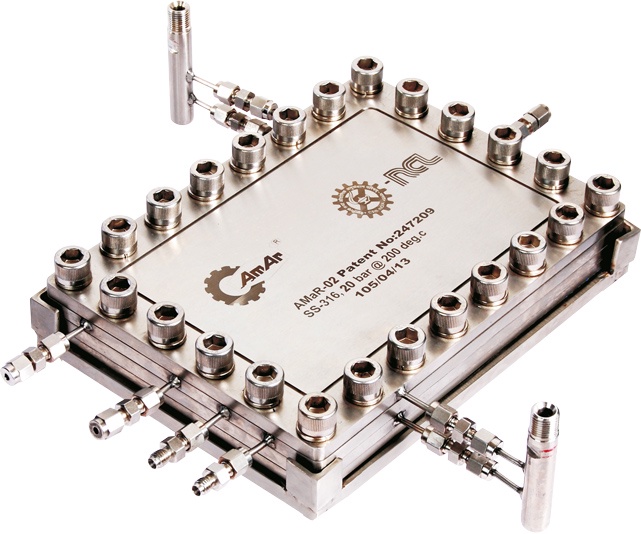Microreactors are small-scale reactors that offer several advantages over traditional reactors for catalytic processes. They provide improved heat and mass transfer, enhanced selectivity, increased safety, and reduced costs. Microreactors are being used in a variety of industrial applications for catalysis, including the production of pharmaceuticals, fertilizers, plastics, biofuels, and other chemicals. These advantages include:
- Improved heat and mass transfer: The small channels in microreactors provide a large surface area for heat and mass transfer, which can lead to faster and more efficient reactions.
- Enhanced selectivity: Microreactors can be designed to promote selective reactions, which can reduce the amount of waste products produced.
- Increased safety: Microreactors can be used to safely carry out hazardous reactions that would be difficult or impossible to conduct in traditional reactors.
- Reduced costs: Microreactors can help to reduce the cost of chemical production by improving the efficiency of catalytic processes.
Microreactors are being used in a variety of industrial applications for catalysis, including:
- Production of pharmaceuticals: Microreactors are being used to produce a variety of pharmaceuticals, including ibuprofen, acetaminophen, and antibiotics.
- Production of fertilizers: Microreactors are being used to produce fertilizers such as ammonia and urea.
- Production of plastics: Microreactors are being used to produce plastics such as polyethylene and polypropylene.
- Production of biofuels: Microreactors are being used to produce biofuels such as ethanol and biodiesel.
- Environmental applications: Microreactors are being used to develop new technologies for water purification and air pollution control.
Here are some specific examples of how microreactors are being used in catalysis:
- Hydrogenation reactions: Microreactors are being used to efficiently hydrogenate a variety of feedstocks, such as vegetable oils and fats, to produce renewable fuels and chemicals.
- Oxidation reactions: Microreactors are being used to selectively oxidize a variety of feedstocks, such as methane and ethane, to produce valuable chemicals such as methanol and acetic acid.
- Polymerization reactions: Microreactors are being used to controllably polymerize a variety of monomers to produce high-quality polymers with desired properties.
- Catalysis of biochemical reactions: Microreactors are being used to catalyze a variety of biochemical reactions, such as enzymatic reactions and fermentation reactions, to produce pharmaceuticals, biofuels, and other products.
Microreactor technology is still in its early stages of development, but it has the potential to revolutionize the chemical processing industry. By using microreactors, chemical manufacturers can produce products more efficiently, safely, and cost-effectively.
Conclusion
Microreactors offer a number of advantages over traditional reactors for catalytic processes. They are being used in a variety of industrial applications to produce a wide range of products, including pharmaceuticals, fertilizers, plastics, biofuels, and other chemicals. Microreactor technology is still in its early stages of development, but it has the potential to revolutionize the chemical processing industry.


No comments yet